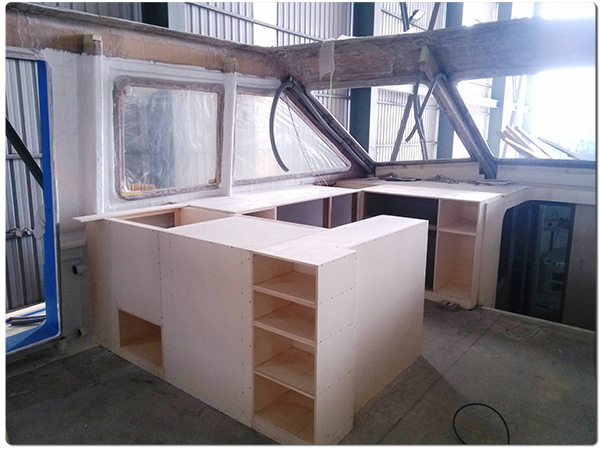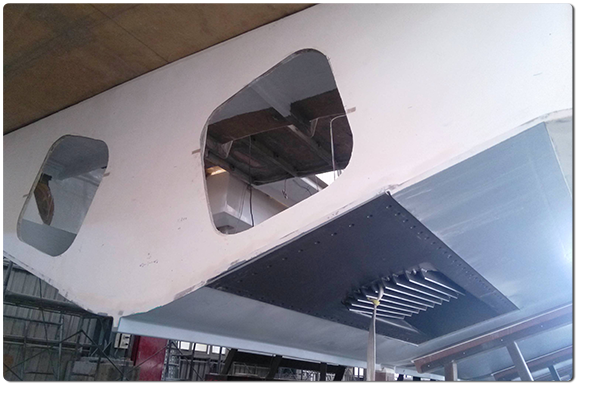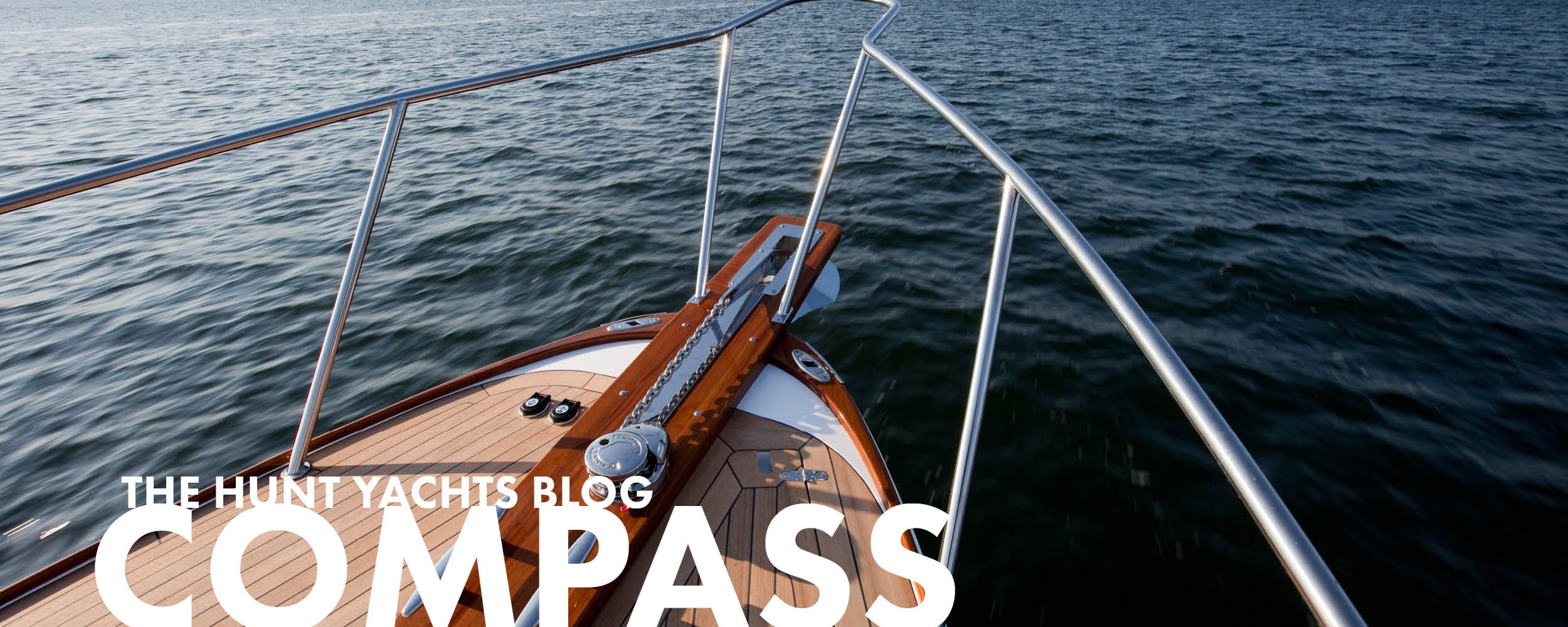
Pure functionality is evident everywhere onboard the new Hunt 80, including the ergonomically laid out galley. Located forward to port inside the main deck salon, the galley is adjacent to the dining area. When finished, in addition to the excellent view through the large deckhouse windows, it will have a full enclosure with an aft-facing opening toward the salon and a sliding door leading to the formal dining table to starboard. A door just aft of the galley leads directly to the weatherdecks, or opens to let in a little seabreeze as needed.

One finds very few flat surfaces or right angles on the exterior of a proper yacht. The art of sculpting in fiberglass starts with careful molding followed by hand fairing to get the compound curves just right in every direction. This technique is fully on display here on the hull, aft to port. A hinged staircase leading up to the main deck will cover the shore power cable connector fittings, protecting them from weather while making them readily accessible. Just aft is the lower dinghy deck and swim platform.
 The inlet grate for the starboard waterjet has been installed and is awaiting mating with the waterjet impeller housing inside the hull and the external nozzle to be mounted to the transom. The grating itself is designed to minimize resistance through the water at high speed, provide ample water flow to the impeller and jet nozzle, and screen out foreign objects that could damage the impeller. Waterjet power is ideal for use in shallow water, wherever lobster trap buoy minefields are plentiful, and in high-speed craft since there is no running gear to add drag. They also provide excellent joystick control around the dock.
The inlet grate for the starboard waterjet has been installed and is awaiting mating with the waterjet impeller housing inside the hull and the external nozzle to be mounted to the transom. The grating itself is designed to minimize resistance through the water at high speed, provide ample water flow to the impeller and jet nozzle, and screen out foreign objects that could damage the impeller. Waterjet power is ideal for use in shallow water, wherever lobster trap buoy minefields are plentiful, and in high-speed craft since there is no running gear to add drag. They also provide excellent joystick control around the dock.

This view of the flying bridge, which is bigger than what you find on many boats fishing 80 miles out in the Gulf Stream, hints at the Hunt 80’s sheer size. It will be fitted with a full climate-controlled enclosure, creating a ship-like pilothouse -- there will be room for plenty of people topside to keep the skipper company and share the superb view. On the outside of the bridge, the complex curves created by continuously changing radii, perfectly complement those of the hull and deckhouse to create a visually seamless structure from mast to waterline.

